With Lunar New Year around the corner, I joined a group chat with SFPBO past and present finalists Rob J. Hayes (Never Die, 2019), Virginia McClain (Blade’s Edge, 2019), M. L. Wang (The Sword of Kaigen, 2019), and K. Bird Lincoln (Tiger Lily, 2017) to discuss English-original Asian fantasy. Due to time zones and deadlines, Devin Madson (We Ride the Storm, 2018) was there in spirit.
We discussed everything from their inspirations and research, to their favorite martial arts movies. We couldn’t quite nail down the niches of the subgenre, and because of the participants, didn’t touch on the highly popular xianxia and wuxia genres.
Overall, we had a great time talking, and perhaps came away with an idea of the state of Asian fantasy fiction.
– – –
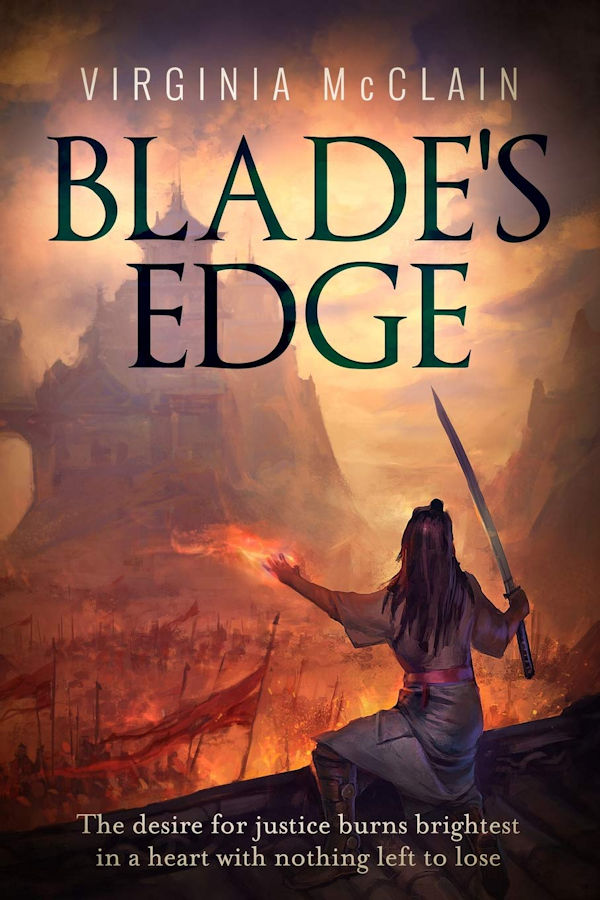 JC Kang: So, first off: How do you classify your
sub-genre of Asian fantasy?
JC Kang: So, first off: How do you classify your
sub-genre of Asian fantasy?
Virginia McClain: Hmmm…. I have no idea. Sword and sorcery? Epic? Action adventure?
K. Bird Lincoln (Kirsten): Historical fantasy.
M. L. Wang: The Sword of Kaigen is sort of high fantasy, sort of sci-fi. High fantasy with encroaching sci-fi elements. Let’s go with that.
Rob J. Hayes: I usually just go with sword and sorcery.
Kirsten: ML, I wondered if your stuff had similarities in terms of melding fantasy and sci-fi elements, like Jay Kristoff’s Stormdancer.
ML: I haven’t read Stormdancer. I always got a bit of steampunk vibe from Kristoff? The Sword of Kaigen deals more with the introduction of modern technology (i.e. cell phone towers and TVs) into a traditional village. No mechs, airships, gun swords, none of that fun stuff.
Kirsten: You’re right, Kristoff is more steampunk than sci-fi (although sometimes I conflate the two).
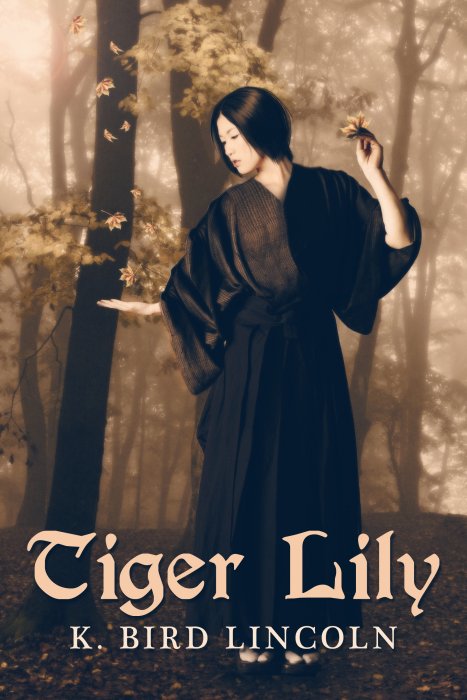 Virginia: I am terrible at choosing subgenres, sadly.
Virginia: I am terrible at choosing subgenres, sadly.
JC: My understanding is that Tiger Lily is a yokai story, and I know Never Die has yokai elements, as well. I would say yokai is a niche subgenre now. I’m thinking of Taya Cook’s Spinning Silk, Nicolette Andrews Japanese fairytale retellings…
Kirsten: Tiger Lily isn’t so much a yokai story as a story set in alternate Ashikaga Shogunate era where there’s a girl who can incite kami (in their nature spirit form) to fight against a villainous trickster fox/kitsune.
JC: I guess what I’m getting at is that within what Amazon classifies as “Asian Myth and Legend,” there are even more niches.
Kirsten: I just finished Julie Kagawa’s Shadow of the Fox which is totally yokai genre and loved it! Right up there with M. H. Boroson’s The Girl With the Ghost Eyes.
Virginia: Blade’s Edge has a tree kami and a dragon kami in it. Does that count?
JC: Or, perhaps we can say that yokai/spirits can be elements in other genres?
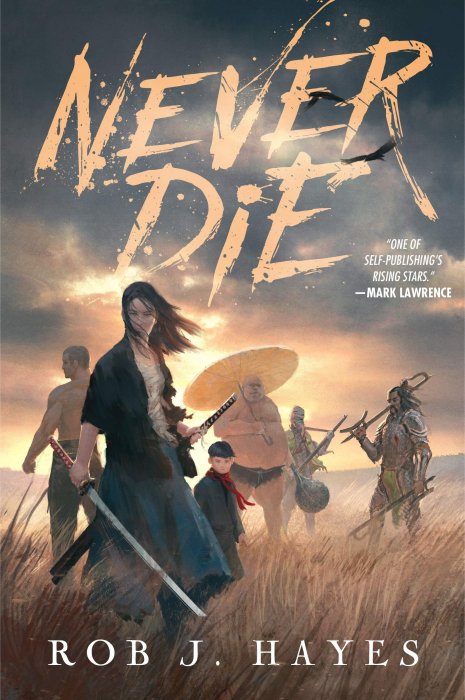 Virginia: I never think of it as yokai, because none
of the main characters are based in Japanese mythology, but the secondary
characters certainly are.
Virginia: I never think of it as yokai, because none
of the main characters are based in Japanese mythology, but the secondary
characters certainly are.
Kirsten: I feel like yokai is its own genre…but more of one relevant to folks in anime, manga and fan fiction than current Amazon fantasy categories. Sometimes I put Tiger Lily under “Myths and Legends,” and I bet a lot of us would fit under there.
Virginia: Amazon certainly puts Blade’s Edge and Traitor’s Hope there.
Rob: I think it’s far more likely that yokai will just end up being part of other genres. Like I don’t think fae have their own subgenre, but they’re often used in both urban and more classical fantasy. I assume yokai will/are used in a similar fashion. They certainly are in Never Die.
I have to admit the whole mess of genres and subgenres confuses me somewhat, but if yokai becomes its own subgenre, I’m all over it. There are some really cool myths and legends to draw inspirations from.
In terms of Zon [Amazon] genres, they only have the Asian Myth and Legends genre really, don’t they? It seems like a bit of a catch all at the moment.
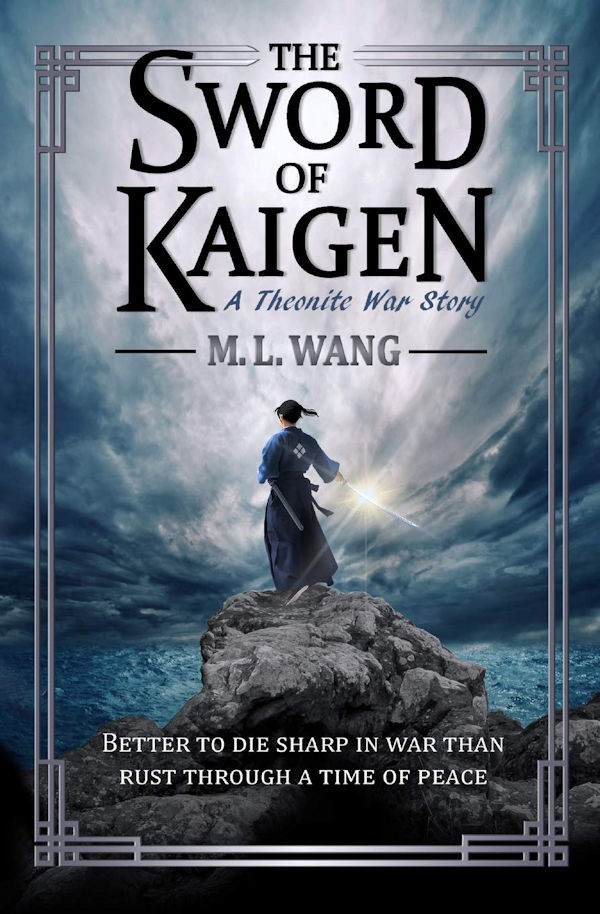 JC: Right, there are Amazon categories, but we can
always make our own subgenres. Speaking of inspiration, what are works that
have influenced your Asian-themed stories?
JC: Right, there are Amazon categories, but we can
always make our own subgenres. Speaking of inspiration, what are works that
have influenced your Asian-themed stories?
ML: Avatar: The Last Airbender is certainly my most obvious influence, with the elemental martial arts magic. As far as proper Japanese source material, I pulled from a lot of the Japanese history and myth I read back in college, like The Kojiki and The Tale of the Heike.
Kirsten: Back in early 2000s I read Kij Johnson’s The Fox Woman (early Heian fantasy with kitsune) after living in Japan and found a true love: alternate or fantastical history where the fantasy was used more as a way to illuminate human experiences or exaggerate emotions rather than as fun entertainment. Tale of Heike for me as well and also ye olde classic Genji Monogatari.
ML: Kristen, you are amazing. I couldn’t read Genji to save my life.
Kirsten: Had to read Genji for school. So I definitely shouldn’t get any credit for it!
JC: Wow, you guys are old school.
 Virginia: I hate to admit it, because rereading after
living in Japan made it totally cringe-worthy, but Shogun was a big
influence on me wanting to write Asian themed fantasy. At least in terms of
what I’d read. The biggest influence for me was just living in Japan. I hadn’t
really planned on writing Japan-inspired fantasy before living there, but while
I was there, I couldn’t resist. And, Airbender was clearly a latent
influence. I didn’t even notice I’d used a similar magic system until after I
published Blade’s Edge, but I definitely watched Avatar first, so
credit where it’s due.
Virginia: I hate to admit it, because rereading after
living in Japan made it totally cringe-worthy, but Shogun was a big
influence on me wanting to write Asian themed fantasy. At least in terms of
what I’d read. The biggest influence for me was just living in Japan. I hadn’t
really planned on writing Japan-inspired fantasy before living there, but while
I was there, I couldn’t resist. And, Airbender was clearly a latent
influence. I didn’t even notice I’d used a similar magic system until after I
published Blade’s Edge, but I definitely watched Avatar first, so
credit where it’s due.
Kirsten: Tokyo boy (my husband) loves watching NHK [Japan’s national broadcasting organization] samurai drama. So those heavily influenced me as well. Especially anything about Shinsengumi.
Rob: Never Die is basically a love letter to martial art films and anime I used to stay up way past my bedtime to watch when I was a kid, and it’s a source of inspiration that I’ve continued to devour into adulthood. I’m afraid I don’t have many of the classical sources to back me up. But if you want a story inspired by films and anime and games, that’s my story.
JC: You guys have mentioned the Last Airbender (and I know Rob’s dog is named Korra); are there any other martial arts movies you would recommend?
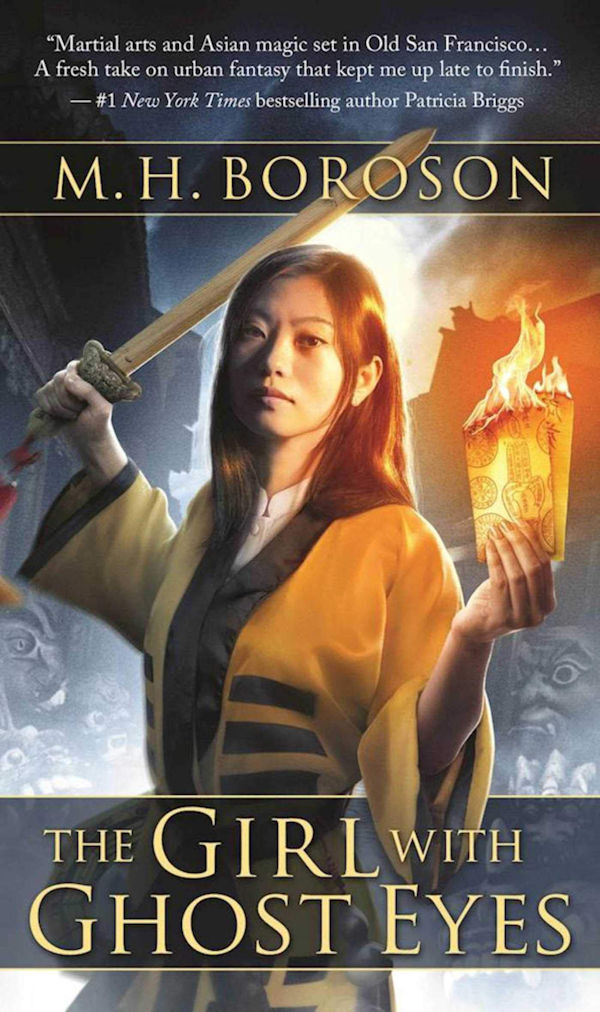 Rob: And yes, my little beagle is named Korra. She doesn’t
take after her namesake much though. She’s the biggest coward ever.
Rob: And yes, my little beagle is named Korra. She doesn’t
take after her namesake much though. She’s the biggest coward ever.
Virginia: Come on, Rob. She’ll get over her fear of boxes one day.
Kirsten: I feel like martial arts movies should be a required component of any world history class. I certainly learned a lot of history from them!
JC: I think there’s a tendency to romanticize history in film, like Hollywood depicts Spaghetti Westerns.
Virginia: I mean, these are the ones that everyone recommends but, Seven Samurai and The Blind Swordsman for sure. I also loved Ip Man.
Rob: I absolutely love pretty much any of them based around the Romance of the Three Kingdoms. I’ll forget names all over the place, but I recently watched Red Cliff (for the tenth time or so), and it’s still awesome.
ML: I second Ip Man. Also LOVED Jet Li’s Fearless when I was in high school, but I haven’t watched it in years, so I don’t know if it holds up.
JC: Just to make you all jealous, I learned Wing Chun from Grandmaster Ip Man’s nephew.
 Virginia: Oh, and Ong Bak!
Virginia: Oh, and Ong Bak!
Kirsten: Anything by Akira Kurosawa. Ran was amazing, but definitely long and I might fall asleep if I watched it again.
Rob: I’m also a terrible sucker for the stupid over the top films. Bit of a guilty pleasure, but I love watching films like Volcano High, Dragon Tiger Gate, and Crows Zero.
Kirsten: Recent Blade of the Immortal with boy band hero Kimura Takuya is great, too.
Virginia: I feel I should also add that training in a Japanese martial art was a huge influence as well. It made me want to include that fighting style (and other Asian fighting styles) in my fiction.
JC: Martial arts seem to be a common theme in Asian fantasy. Besides Virginia, do any of you train? And what?
ML: Black belt in traditional taekwondo and karate.
Kirsten: I trained in Taijutsu and Tai chi in college. Now I’m more of a yoga person.
 Virginia: I trained Shotokan Karate for a long while
but haven’t trained in years. I train in my head sometimes, but haven’t gotten
on the mats in ages.
Virginia: I trained Shotokan Karate for a long while
but haven’t trained in years. I train in my head sometimes, but haven’t gotten
on the mats in ages.
Rob: I reached a green belt in karate when I was eight… And that’s it. Pretty sure everyone in this group could kick my arse seven ways from Sunday.
Kirsten: I wonder if there’s some correlation between doing martial arts, watching old martial arts movies and wanting to write fantasy?
ML: I originally signed up to my martial arts school when I was a kid, for heritage reasons, because it was the only school in the city offering traditional Chinese martial arts. That program ended, the grandmaster tricked me into rolling my membership over to the taekwondo program, and then I was there for the next decade, so…
Virginia: That sounds like a good trick, honestly.
JC: A trad-published Asian fantasy author, Cindy Pon, told me five years ago that agents didn’t think there was a market for the genre. How has that changed?
Rob: An agent told me the same thing about Never Die in 2018.
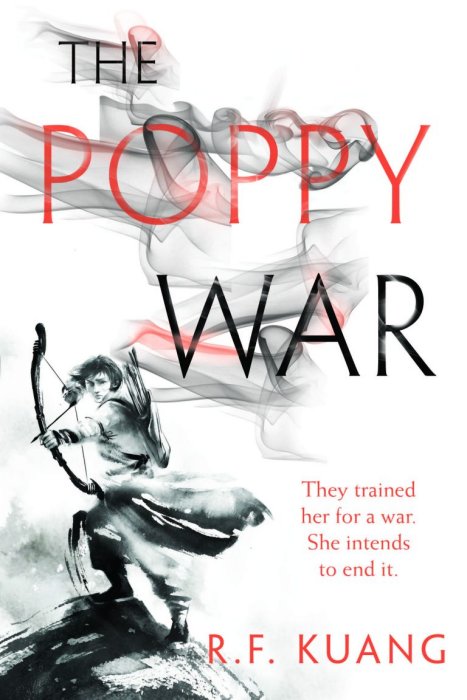 JC: In 2018? The Poppy War, Descendant of
the Crane, Spin the Dawn, Jade City… they all came out
around that time!
JC: In 2018? The Poppy War, Descendant of
the Crane, Spin the Dawn, Jade City… they all came out
around that time!
Virginia: I think indie will always be ten years ahead of trad. I mean, we have the flexibility to discover if there is a market, and then trad will follow eventually.
Kirsten: Completely. Even trad published folks are getting in on things since about five years ago Jay Kristoff, Steve Bein, Fonda Lee, Matt Boroson, etc.
Rob: I think it is changing. There’s definitely a whole bunch of Asian fantasy starting to come through. But for a great many years, fantasy has been all about the Eurocentric settings. It’s changing now, and there’s a whole load more variety coming through, but I’d wager the vast majority (for a while at least) will continue to be in a pseudo-Euro setting.
JC: Are there any of those trad-published Asian fantasy books that you absolutely loved?
Kirsten: I read in romance, too and it’s been awesome seeing Asian-American heroines become more prevalent there. Not to mention movies like Crazy Rich Asians and To All the Boys I Loved Before.
 JC: To All the Boys I Loved Before is what got
my then-twelve-year-old daughter into reading.
JC: To All the Boys I Loved Before is what got
my then-twelve-year-old daughter into reading.
Kirsten: To All the Boys I Loved Before is the tv show where my girls finally saw themselves represented…culturally mostly mainstream white, but with Asian heritage. The scene where they intro the hero to Yakult was so on point…like literally my girls have done that.
Rob: We Ride the Storm! Okay, I don’t think it’s technically trad yet, but it will be, and it was amazing!
Virginia: I recently read Steel Crow Saga by Paul Krueger and I adored it!
Kirsten: How long a list of Asian-influenced fantasy that I love would you like! (trad published)
JC: Spill!
ML: Give us the list!
Virginia: TURN THIS INTO A LISTICLE!
Rob: All of them! My TBR is waiting.
Kirsten: Well to begin with, the folks that I mentioned above: Steve Bein’s Daughter of the Sword [Fated Blades] trilogy (alternates modern female Tokyo cop with historical samurai stuff).
MH: Boroson’s The Girl with Ghost Eyes for Chinese yokai fun.
Julie Kagawa’s Shadow of the Fox for spot-on Japanese yokai adventure.
[Editor’s Note: You can find a complete list of all the books in this discussion at the bottom of the page.]
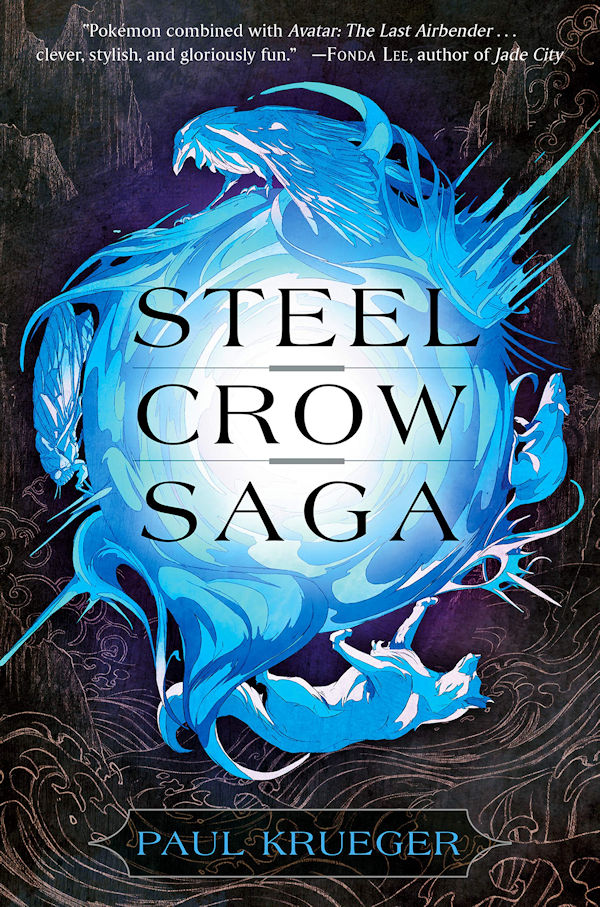 JC: Okay, while Kirsten is compiling a list, I’ll go
on: Do you think three Asian fantasies in this year’s SPFBO indicates a growing
interest in the genre?
JC: Okay, while Kirsten is compiling a list, I’ll go
on: Do you think three Asian fantasies in this year’s SPFBO indicates a growing
interest in the genre?
Virginia: Well, I would love to think so. I guess the test will be after the judges read all three entries if they still want more?
Rob: I think so. I actually think there’s growing interest in a whole range of different genres at the moment. I feel like a lot is changing within the fantasy genre, and desire for new settings and inspirations is a big drive behind that.
ML: I’m not the marketing expert here, but this thing has sold way better than my non-Asian sci-fi/fantasy books, so maybe? I think East Asian settings might represent a comfortable half-step out of Euro-centric fantasy in that Chinese and Japanese stuff are present enough in popular culture that they don’t feel completely alien. I am hoping it opens the door to even less familiar fantasy worlds, because I always prefer things to be weird.
Rob: Funnily enough. Never Die is my best-selling book since my debut six years ago…by a MASSIVE margin.
Virginia: I think Eurocentric fantasy has been done for so long now people are getting hungry for other stuff. I think the popularity of books like We Hunt the Flame, An Ember in the Ashes, and other non-European fantasy settings marks a long-awaited turn away from Tolkien’s style of fantasy.
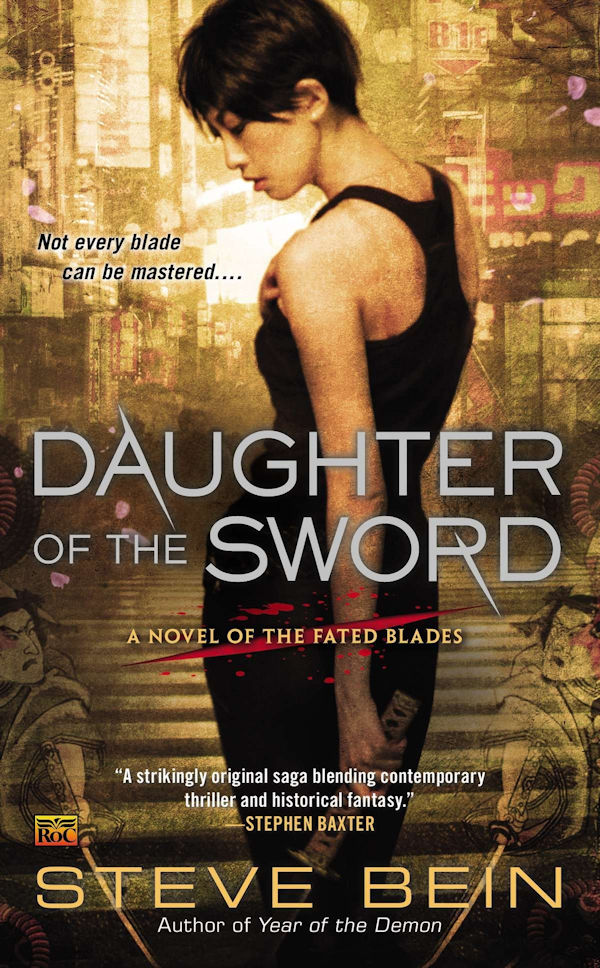 JC: ML brings up that Chinese and Japanese elements
might already be familiar to Western readers. Most of the Asian-themed fantasy
stories out there are East Asian; Asia’s a big place, what area would you like
to see explored?
JC: ML brings up that Chinese and Japanese elements
might already be familiar to Western readers. Most of the Asian-themed fantasy
stories out there are East Asian; Asia’s a big place, what area would you like
to see explored?
Virginia: All of it! One of my favorite parts of Steel Crow Saga was how many different parts of Asia Krueger brought into play in the book. He created parallels to Japan, China, Korea, Taiwan, India, Malaysia and the Philippines.
Probably more that I missed too. I would love to see more of that.
ML: Not so much a geographical thing, but I’d love to see modern fantasy stories from ethnic groups I’ve never heard of. Chinese ethnic minorities. Southeast Asian ethnic groups. I grew up in an area with a big Hmong population. Their traditional culture is so distinct from their Southeast Asian neighbors and their diasporic experience so distinct from other Asian-Americans, I’d read the heck out of a Hmong-inspired fantasy—and that’s just the obscure ethnic group I happen to be familiar with. I was just looking up traditionally matrilineal and matrilocal societies for research on a new project and found that India alone has, like, six? What? Can we get a fantasy about those?
Virginia: Yes! That sounds amazing! I would love an epic that spanned the continent.
Kirsten: I wish someone would really do Pacific Islander/ Philippine.
 Virginia: Read Steel Crow Saga!
Virginia: Read Steel Crow Saga!
(I feel like I’m a one-woman Paul Krueger fan club right now.)
JC: I would say Jade City is borderline Pacific Islander/Philippine
Kirsten: Jade City is…but heavily Chinese-influenced.
ML: K. S. Villoso?
JC: Yes, K. S. Villoso’s upcoming release is Philippines-inspired!
JC: Any research that went into your Asian-themed stories?
Virginia: Museums! There was a wonderful samurai exhibit that came through my town while I was living in Japan. And I went to SOOOOOOOOOOO many shrines.
Rob: I went down the rabbit hole of researching yokai. It was a fun week, but I learned some really weird shit.
Virginia: Do tell!
ML: The reason I thought The Sword of Kaigen would make a fun side project was that it didn’t come with extra reading. Unlike my African-inspired stuff, which requires constant research, this one dealt with a bunch of my incidental knowledge: Japan, China, WWII, martial arts, swords, and babies! My only ‘research’ endeavor was enrolling in another sword class, but it came with the katana so, to be honest, I was probably going to take it anyway.
 Kirsten: Lots of obscure Google searches like, “When
did cats come to Japan?” and “What did Ashikaga era folks use as sugar?”
Kirsten: Lots of obscure Google searches like, “When
did cats come to Japan?” and “What did Ashikaga era folks use as sugar?”
Virginia: When did cats come to Japan?
Kirsten: Oh man, don’t make me recreate that search! Earlier than I thought. 538 CE.
JC: Okay, ten minutes left, and I’m out of questions. Anything you want to ask of each other?
Kirsten: Some of us are Caucasian and some of us are more “own voices.” Did that influence how you approached writing your story?
ML: I’m not actually Japanese, so I think that makes John the only own voices author.
JC: When I contacted you all, I was definitely thinking that there was no one writing in their own culture.
ML: I definitely get mistaken for an own voices author, which is its whole other kind of annoying.
JC: But Kirsten is married to a Japanese person, surely that gives you insights?
Kirsten: I think more than being married to a Japanese person (who wasn’t alive during Ashikaga era) it was my background in Japanese Studies that made me want to not make glaring mistakes (such as putting cats in a story when historically no cats) I just imagined all my classmates sitting there nitpicking. I think I intentionally made Tiger Lily alternate history (I changed religious stuff regarding Shinto and Buddhism) so I wouldn’t step on toes, however.
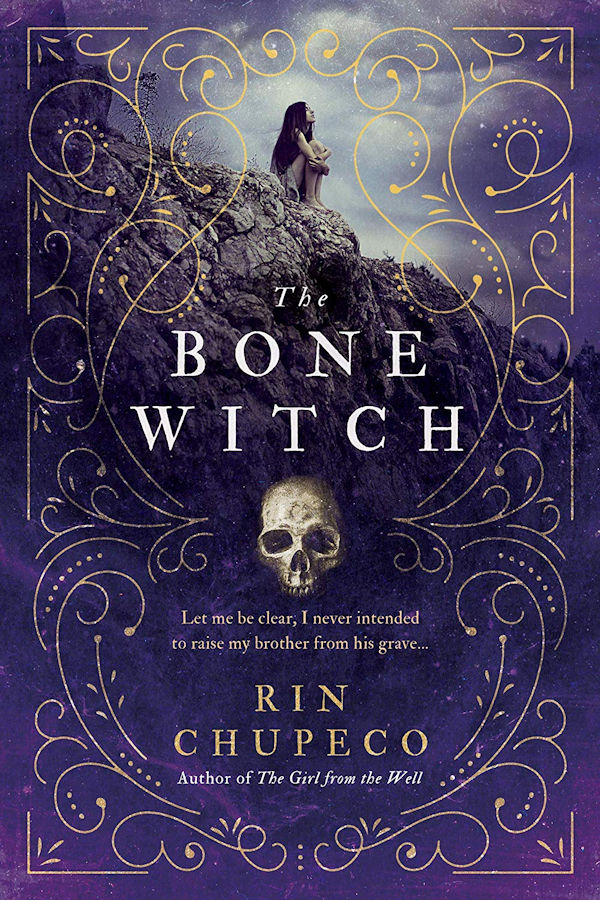 Tokyo Boy was helpful for research.
Tokyo Boy was helpful for research.
But then my next project ended up being urban fantasy about a biracial girl with a Caucasian mom and Japanese dad, so I gravitated more towards “own voices” king of thing.
Virginia: I went out of my way to not write historical fantasy because I wanted to create an alternate history, and a magic system that was inspired by, but not solely tied to, Shinto and Buddhist belief systems.
Kirsten: I wonder if my preoccupation with the whole, “White woman writing Asian fantasy” is more a product of my generation and the lack of Asian influenced fantasy I had growing up……
I wonder if younger writers don’t see it as something they need to worry about now?
JC: The lack of Asian-influenced fantasy when I was growing up is why I started my larger story with the Asian part of the world.
Virginia: What is everyone’s next Asian-themed project?
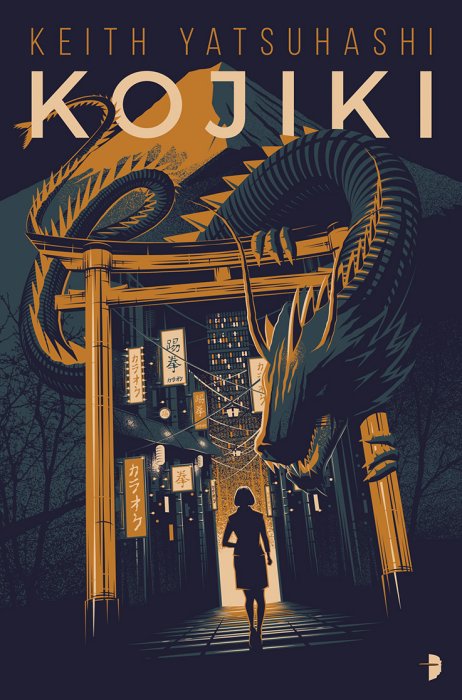 Rob: This might cause me to break down in tears at
this point, lol. My next Asian-specific project is a sequel (not a sequel) to Never
Die. It’s set in the same world, but is another stand alone, though it does
feature a couple of minor characters from Never Die.
Rob: This might cause me to break down in tears at
this point, lol. My next Asian-specific project is a sequel (not a sequel) to Never
Die. It’s set in the same world, but is another stand alone, though it does
feature a couple of minor characters from Never Die.
Virginia: I am working on the third Chronicles of Gensokai book. And I hope to have it out in 2021. I am seriously excited about going back to that world after taking a break from it for two years to write an urban fantasy series. And, the next book features a mom warrior who has to rescue her husband and is forced to bring her three-year-old along for the ride.
Kirsten: I love books where the warrior mom has to handle actual mother responsibilities.
ML: My next project is a loosely Mulan-inspired flintlock fantasy with a calligraphy-based magic system and a side of f/f romance. Hoping to have both books in the duology finished by early 2021.
Virginia: That sounds amazing!
JC: Wow, there’s so much to love about that description, I don’t know where to start.
Kirsten: I’ve gravitated more towards Asian-American experiences in modern culture recently. So, my next project is a trio of YA urban fantasy about a group of high school kids who do urban exploration in the Twin Cities. First book has a Japanese-American main character.
JC: That’s about all the time we have. Thank you so much for joining in on the chat!
If you are interested, several of these authors discuss Asian fantasy in this Facebook group: Asian Fantasy Book Club.
– – –
This is a list of all the books mentioned in the above discussion. If you can think of any we’ve missed let us know in the comments! Books are listed in alphabetical order by title.
- Across the Nightingale Floor (Tales of the Otori #1) by Lian Hearn
- Blade’s Edge (Chronicles of Gensokai #1) by Virginia McClain
- The Bone Witch (The Bone Witch #1) by Rin Chupeco
- Bridge of Birds (The Chronicles of Master Li and Number Ten Ox #1) by Barry Hughart
- Daughter of the Sword (Fated Blades #1) by Steve Bein
- Descendant of the Crane by Joan He
- The Fox Woman (Love/War/Death, #1) by Kij Johnson
- The Girl with Ghost Eyes (The Daoshi Chronicles #1) by M.H. Boroson
- Jade City (The Green Bone Saga #1) by Fonda Lee
- Kojiki (Kojiki #1) by Keith Yatsuhashi
- Monstress, Vol. 1: Awakening (Monstress #1) by Marjorie M. Liu
- Moribito: Guardian of the Spirit (Guardian #1) by Nahoko Uehashi, translated by Cathy Hirano
- Never Die by Rob J. Hayes
- The Poppy War (The Poppy War #1) by R. F. Kuang
- Prophecy (The Dragon King Chronicles #1) by Ellen Oh
- Returning My Sister’s Face and Other Far Eastern Tales of Whimsy and Malice by Eugie Foster
- Shadow of the Fox (Shadow of the Fox #1) by Julie Kagawa
- Silver Phoenix (Kingdom of Xia (Phoenix) #1) by Cindy Pon
- Spin the Dawn (The Blood of Stars #1) by Elizabeth Lim
- Spinning Silk (Spinning Silk #1) by T. Cook
- Steel Crow Saga (Steel Crow Saga #1) by Paul Krueger
- Stormdancer The Lotus Wars #1) by Jay Kristoff
- The Sword of Kaigen (Theonite) by M. L. Wang
- Tiger Lily Tiger Lily #1) by K. Bird Lincoln
- Tomoe Gozen (Tomoe Gozen #1) by Jessica Amanda Salmonson
- Under Heaven (Under Heaven #1) by Guy Gavriel Kay
- We Ride the Storm (The Reborn Empire #1) by Devin Madson


[…] *This interview was first published on Fantasy Faction (January 24th 2020) and has been republished here with the interviewer’s permission. […]